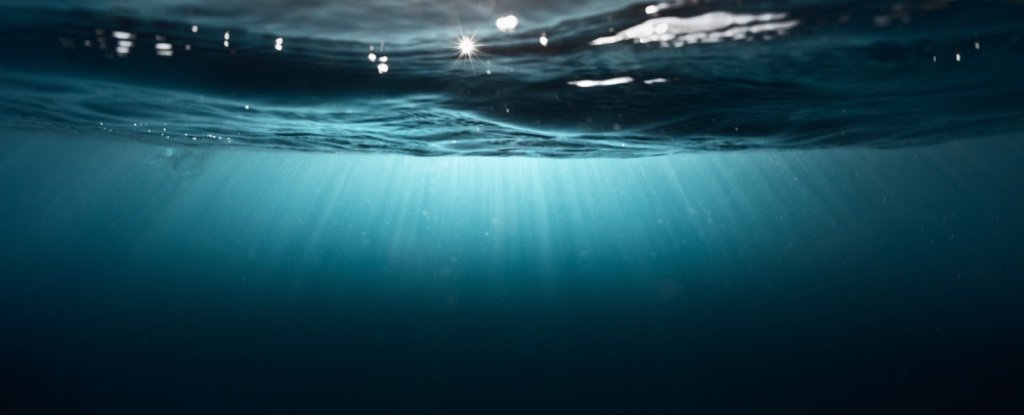Products You May Like
Earth’s oceans are full of life, with multitudes of creatures making their home beneath the waves. But not everywhere in the deep blue sea is receptive to life’s presence.
In recent years, scientists have become increasingly concerned about ‘dead zones’: areas of hypoxic waters in the ocean where oxygen levels are so low, marine animals cannot survive within them.
In recent decades, dead zones have vastly expanded their reach and are also no longer confined to the ocean, with oxygen loss in lakes now outpacing the same phenomenon offshore.
As troubling as dead zones are, however, this is not exactly a new problem in the oceans, scientists say.
In a new study, researchers discovered that dead zones have actually been a recurring feature of the Pacific Ocean for longer than anybody ever realized – at least around 1.2 million years, in fact.
Analyzing a core of ancient sediment drilled from the Bering Sea seabed in the North Pacific, scientists identified 27 separate instances of dead zones – officially termed oxygen minimum zones (OMZs) – in the last 1.2 million years, suggesting repeat bouts of hypoxia were a relatively regular feature of the Pacific throughout the Pleistocene.
Before this, it was known that the end of the last ice age (roughly 12,000 years ago) coincided with widespread hypoxia in the North Pacific, as major warming events triggered ice sheet melting that sent huge amounts of fresh water into the ocean.
But dead zones existed long before that, the core sediment reveals, and it didn’t usually require such dramatic environmental transformations for them to emerge.
“It doesn’t take a huge perturbation like melting ice sheets for this to happen,” says ocean scientist Ana Christina Ravelo from the University of California, Santa Cruz (UC Santa Cruz).
“These abrupt hypoxic events are actually common in the geologic record, and they are not typically associated with deglaciation. They almost always happen during the warm interglacial periods, like the one we’re in now.”
Among the 27 OMZ signals identified – indicated by ‘laminated’ layers in the core, reflecting undisturbed sediment laid down in the absence of living creatures – some of the dead zone intervals lasted for less than a thousand years, while in others the hypoxic conditions persisted for close to 40 millennia.
While the OMZs occur at inconsistent times, not showing any kind of routine outside of randomness, they were nonetheless a regular occurrence during the Pleistocene – suggesting that, in the ocean, dead zones are a part of life.
“We don’t know how extensive they were [outside the North Pacific], but we do know they were very intense,” Ravelo says. “The system is primed for this type of event happening.”
OMZs are often attributed to harmful algal blooms, made up of microscopic organisms that eventually decompose and sink to the bottom of the seafloor. As they sink, bacterial degradation of the biomass ends up consuming oxygen in the water.
In today’s dead zones, environmental pollution is a big part of the problem, with waste products from human activities (especially agricultural fertilizers) flowing into the ocean and waterways, serving as a nutrient source that attracts an abundance of marine algae.
Warmer water makes dead zones more likely, as do ocean circulation conditions, but other factors are involved too.
“Our study shows that high sea levels, which occur during warm interglacial climates, contributed to these hypoxic events,” says first author of the study, data scientist Karla Knudson, a former UC Santa Cruz graduate student in ocean science.
“During high sea levels, dissolved iron from the flooded continental shelves can be transferred to the open ocean and promote intense phytoplankton growth in the surface waters.”
While the findings suggest dead zones are not an aberration of today’s polluted, anthropogenically heated world, there is no comfort to be found in the realization that pollution, warmer waters, and higher sea levels are some of the primary drivers behind water transitions that can suffocate marine animals for thousands of years at a time.
Just how widespread future dead zones might get is a pressing question, and one that might be answered by drilling deep sediment cores from other oceanic locations, to try and quantify the geographic extent of the previous OMZ occurrences discovered here.
Those snapshots from the ocean’s past could turn out to be an ominous preview of the scale of tomorrow’s dead zones. Already, some scientists project that oxygen levels will keep declining in the global ocean for the next thousand years or more.
This is scary, serious stuff, and we can’t afford to look the other way.
“It is essential to understand whether climate change is pushing the oceans toward a ‘tipping point’ for abrupt and severe hypoxia that would destroy ecosystems, food sources, and economies,” Knudson says.
The findings are reported in Science Advances.
